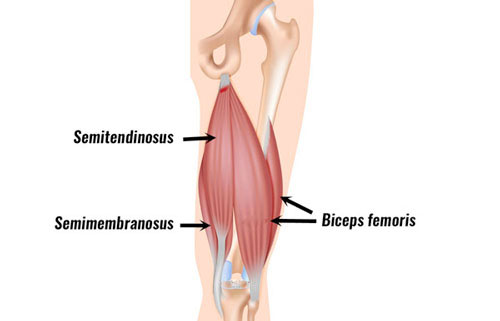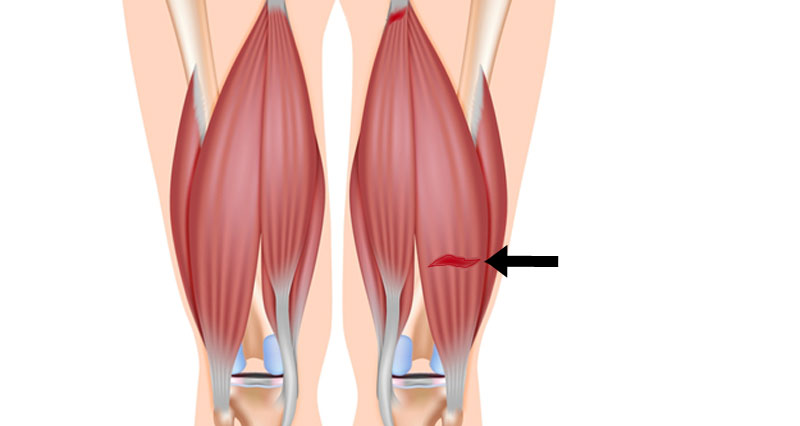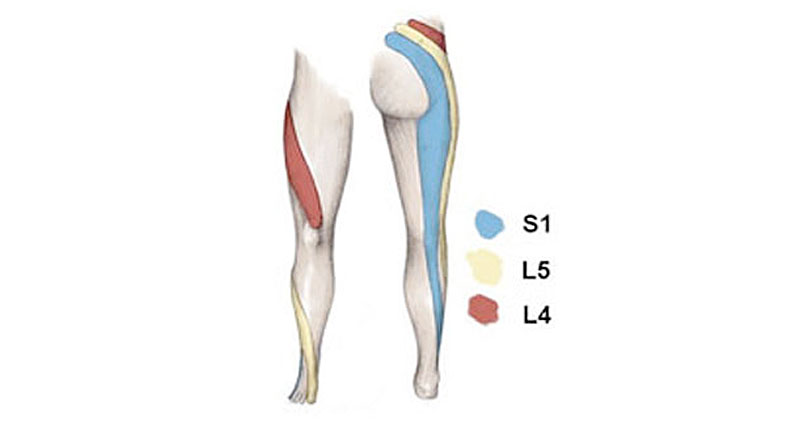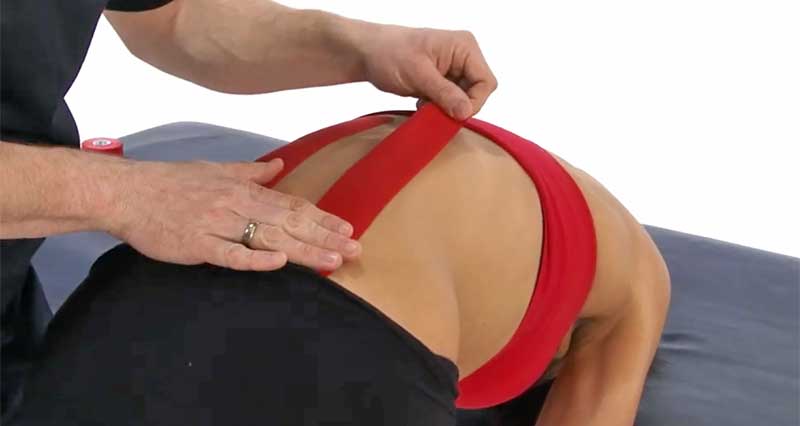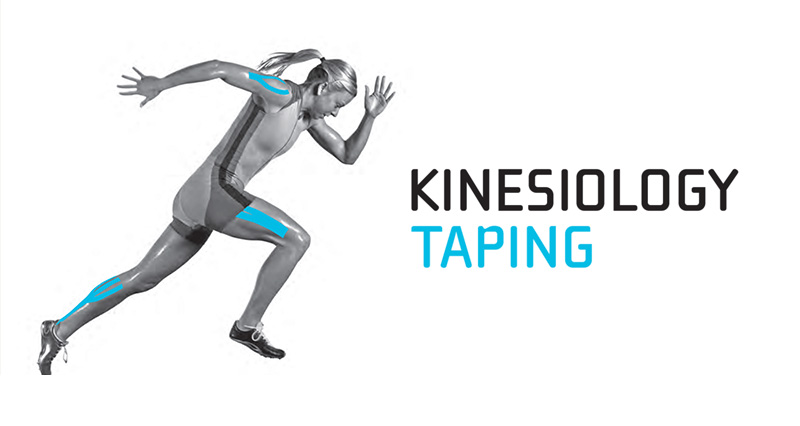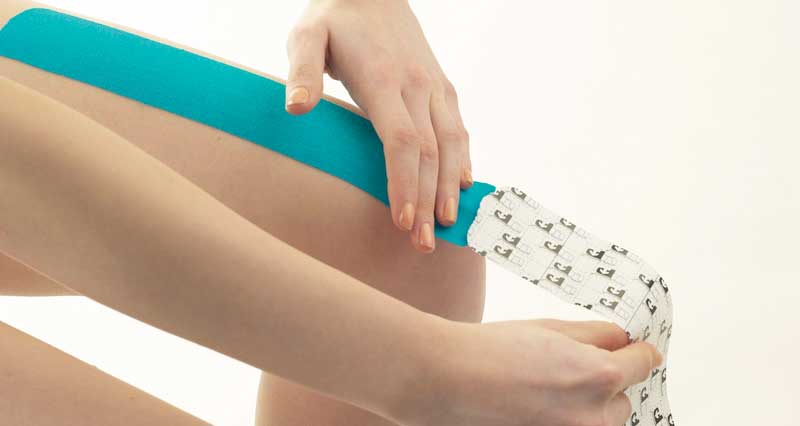Kinesiology taping can be applied in a number of ways and is used to activate muscles, deactivate muscles as well as drain lymph/tissue fluids away from the site of injury. Here we explain when and how kinesiology taping is used as part of hamstring strain rehabilitation.
Medically reviewed by Dr Chaminda Goonetilleke, 9th Feb. 2022.
During the later stages of rehabilitation kinesio taping for the hamstring muscles is used to encourage or increase the activation of the muscle fibres.
How to apply Kinesiology taping for hamstrings
Prepare the tape
Cut three strips of tape so there are no sharp corners at the ends. This helps prevent it from coming away from the skin once applied.
Fold each strip of tape over at around 1/4 to 1/3 down and tear the protective backing along the line of the fold.
Detach the smaller top part of the protective backing exposing the sticky tape.

Buy Kinesiology Tape
Apply hamstring kinesiology tape
Ensure the muscle is in a stretched position. It is important to know where the hamstring muscles originate and insert so you can apply tape fully along the length of the muscle.
Starting at the top (origin) or the muscle, apply the sticky part of the tape at the origin or the muscle without any tension or stretch applied to the tape.
Then by gradually removing the rest of the tape backing, apply tape along the full length of the muscle to the point where it inserts below the knee. Apply approximately 50% stretch to the middle 2/3 of the kinesiology tape when applying it.
Next activate the glue in the tape by rubbing along the length of the tape. This creates heat which activates the glue making it stick more effectively. Repeat the process with the other two strips of kinesiology tape along with the other two hamstring muscles.
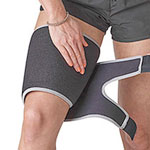
Buy Thigh Supports
The hamstring muscles
Here is a quick reminder of the location of the hamstring muscles.
